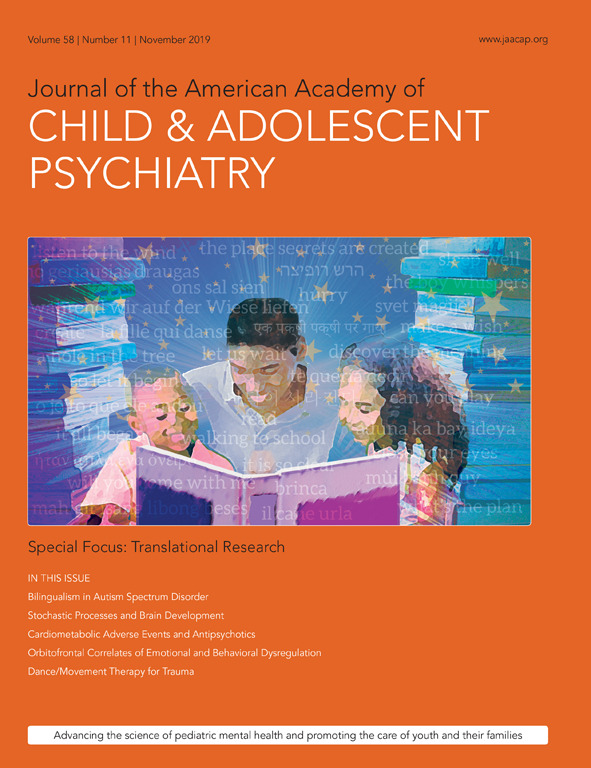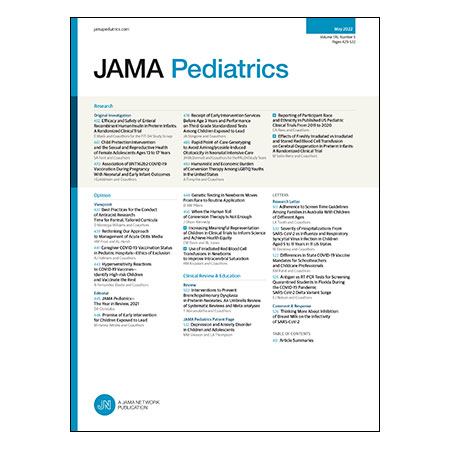Page 2 of 67
Parental sensitivity, family alliance and infants’ vagal tone: Influences of early family interactions on physiological emotion regulation
Maternal (not paternal) sensitivity and family alliance were associated with infants’ vagal tone during dyadic and triadic interactions, providing potential evidence for a mechanism by which early attachment is related to later emotional regulation. Rattaz, V., Tissot, H., Puglisi, N., Razurel, C., Epiney, M., & Favez, N. (2023). Infant Mental Health Journal, 00, 1–11. https://doi.org/10.1002/imhj.22085 […]

October 17, 2023
Intergenerational transmission of maternal childhood maltreatment prior to birth: effects on human fetal amygdala functional connectivity
Can the effects of childhood maltreatment be passed from generation to generation? This study found that pregnant women’s experiences of CM were associated with offspring brain development in utero. The strongest effects were found in the left hemisphere, potentially indicating lateralization of the effects of maternal CM on the fetal brain. Marion I. van den […]

Stage 2 registered report: Epigenetic intergenerational transmission: Mothers’ adverse childhood experiences and DNA methylation
How else might the effects of adverse childhood experiences be transmitted to future generations? Results from the Avon Longitudinal Study show that mothers’ ACE exposure is associated with DNAm in male (but not female) offspring, supporting the notion that in some situations, DNAm could be a marker of intergenerational biological embedding of mothers’ childhood adversity. […]

Childhood maltreatment history and trauma-specific predictors of parenting stress in new fathers
New fathers who have experienced childhood maltreatment are at greater risk of parenting stress. The neonatal period may offer an opportunity to mitigate intergenerational effects on psychiatric vulnerability. Granner, J. R., Lee, S. J., Burns, J., Herrenkohl, T. I., Miller, A. L., & Seng, J. S. (2023). Infant Mental Health Journal, 00, 1–14. https://doi.org/10.1002/imhj.22084 https://onlinelibrary.wiley.com/action/showCitFormats?doi=10.1002%2Fimhj.22084

Neonatal intensive care unit latent profiles of maternal distress: Associations with 5-year maternal and child mental health outcomes
Mothers in neonatal intensive care units (NICU) with a high depression and anxiety profile report more anxiety and life stress at follow-up and that their children experience more anxious/depressed symptoms. Improved early identification and support for this cohort may yield intergenerational benefits. Wanjikũ F.M. Njoroge, MD, Emily D. Gerstein, PhD, Rachel E. Lean, PhD, Rachel […]

Bidirectional associations between screen time and children’s externalizing and internalizing behaviors
During this study of over 10,000 Irish children, age-related associations were found between screen time and problem childhood behaviour. Greater externalizing and internalizing behaviors at age 3 were directionally associated with increased screen time at age 5. Greater screen time at ages 3 and 5 was directionally associated with increased internalizing behaviors at ages 5 […]

Bridging the gap: Impact of dedicated post-discharge services on readmission rates and emergency department visits for psychiatrically hospitalized youth
Dedicated post-discharge bridging services including family-centered, flexible case management and therapeutic supports may reduce EDMH visits and lower readmission for children and adolescents. Simmons S, Noble C, Arquette K, Thompson AD.. Clinical Child Psychology and Psychiatry. 2023;28(4):1257-1265. doi:10.1177/13591045221125634 https://journals.sagepub.com/doi/abs/10.1177/13591045221125634

AI as a mental health therapist for adolescents
Benefits and risks of conversational and generative forms of articifial intelligence (AI) are important to consider when considering the use of AI for improving the mental health of young people Opel DJ, Kious BM, Cohen IG. JAMA Pediatr. Published online October 16, 2023. doi:10.1001/jamapediatrics.2023.4215 https://jamanetwork.com/journals/jamapediatrics/fullarticle/2810490?guestAccessKey=772f5da1-67ee-497f-a76f-8907efab2e64&utm_source=silverchair&utm_medium=email&utm_campaign=article_alert-jamapediatrics&utm_content=olf&utm_term=101623&adv=null

Translating the nuanced risk for substance use among adolescents treated for attention-deficit/hyperactivity disorder (ADHD) into clinical practice: a commentary on McCabe et al. (2023)
While untreated childhood ADHD may be associated with later substance use, treatment with stimulant medication needs to be carefully managed, especially among young people whose likelihood of misusing stimulants has increased over the past few decades. Kennedy, T.M. and Molina, B.S.G. (2023), Translating the nuanced risk for substance use among adolescents treated for attention-deficit/hyperactivity disorder […]

Practitioner Review: Common elements in treatments for youth suicide attempts and self-harm – a practitioner review based on review of treatment elements associated with intervention benefits
This review of 18 trials identifies five common elements among effective therapies: (a) inclusion of therapy for both the youth and family/caregivers; (b) an emphasis on relationship-building and the therapeutic alliance; (c) utilization of an individualized case conceptualization to guide treatment; (d) provided skills training (e.g. emotion regulation skills) to both youth and their parents/caregivers; […]

Page 2 of 67
Got an event to promote? Submit your event here

